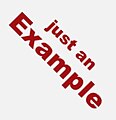The LAVA Visual Analytic Design Language
-
Caption1
-
Caption2
LAVA is a visual analytic design language developed over several years at business software provider SAP AG. A Design language is a systematic specification for how groups of related products, typically from a single brand, are to appear and behave in consistent forms and ways. Design languages are used by producers of consumer appliances, automobiles, and computer hardware and software. LAVA is a software design language, as is Metro from Microsoft, and Material Design from Google. LAVA has since been a key component of SAP's user interface design strategy for it's visual analytics products since its announcement by SAP in 2013[1][2][3]
The name is a metaphorical reference of the ever-growing amount of quantitative data being created to lava flowing from cracks in the earth, and was inspired by a series of Hawaiian-themed project monikers at SAP software subsidiary BusinessObjects.
LAVA is well documented in the 2016 book "Bringing Numbers to Life: LAVA and Design-Led Innovation in Visual Analytics, by John Armitage, published by The Interaction Design Foundation, an open-source provider of online design education.[4][5]

LAVA's key innovation is the Lattice component, a hybrid table/visualization display intended for intuitive navigation and display of hierarchical, multi-dimensional data structures consistently on any size of device screen. Other elements include the Board, a set of web page layouts made of inter-related display components intended to serve as commonly-used and reliable dashboard display templates. LAVA also prescribes the display of data metrics, or quantitative facts about important things called Key Performance Indicators, via a highly constrained but nonetheless robust display format called Points. Points provide a strict layout format to show the most relevant titles, charts, and associated data about any quantitative fact in a very small space. Finally, by organizing a number of charts in horizontally-scrolling containers, called Channels, LAVA Boards are designed to adapt, via Responsive Design principles, to any size of computer display without distortion or awkward layouts.
Related Patents[edit]
Navigable Visualization of a Hierarchical Data Structure United States 9,229,609 Issued January 5, 2016[6] This is the Hierarchical Strip Chart, a way to combine multi-dimensional data set menus with their associated quantitative displays in the form of a navigable stacked bar chart (or Strip Chart).
The Columnar Tree Map United States 8,854,371 Issued October 7, 2014[7] A new type of heat map display, organized according to multiple fixed column widths so as to accommodate legible cell labels.
Improved Consumption Model for Analytics United States 20140082540 Filed September 18, 2012[8] LAVA's Lattice control, a metachart component for casual-user manipulation and navigation of multi-dimensional data sets.
Navigation Framework for Visual Analytic Displays United States 9,274,686 Issued March 1, 2016[9] A design system for organizing interconnected hierarchies of LAVA Board instances, and displaying resulting summarized analytic displays in a hybrid summary dashboard/access menu.
Space Constrained Small Format Visual Analytic Labeling United States 9,384,575 Issued July 5, 2016[10] A design system for generating the most appropriate and descriptive minichart titles (the small charts called Points in the LAVA design language) automatically from their metadata.
Improved Consumption Model for Summary Analytics United States 9,135,314 Issued September 15, 2015[11] LAVA’s visual analytics consumption model; basically a universal dashboard template.
Space Constrained Ordered List Previews United States 20150193094 Filed July 9, 2015[12] This is the scrolling bar chart, which compiles off-screen chart rows into a summarized “Others” row with sample member titles and an associated row plot of either a subdivided sum or average compilation of member values.
References[edit]
- ↑ http://www.computerworld.ch/news/software/artikel/visuelle-bi-designer-von-sap-und-oracle-64045/
- ↑ http://www.lemagit.fr/actualites/2240203784/LAVA-un-projet-SAP-pour-mieux-visualiser-les-donnees-en-volume
- ↑ https://blogs.sap.com/2013/08/09/conveying-information-clearly-with-sap-s-lava-design-language/
- ↑ https://www.interaction-design.org/literature/book/bringing-numbers-to-life?ep=john-armitage
- ↑ https://www.interaction-design.org/literature/book/bringing-numbers-to-life/assets
- ↑ http://patents.com/us-9229609.html
- ↑ http://patents.com/us-8854371.html
- ↑ http://patents.com/us-20140082540.html
- ↑ http://patents.com/us-9274686.html
- ↑ http://patents.com/us-9384575.html
- ↑ http://patents.com/us-9135314.html
- ↑ http://patents.com/us-20150193094.html
This article "The LAVA Visual Analytic Design Language" is from Wikipedia. The list of its authors can be seen in its historical and/or the page Edithistory:The LAVA Visual Analytic Design Language. Articles copied from Draft Namespace on Wikipedia could be seen on the Draft Namespace of Wikipedia and not main one.

